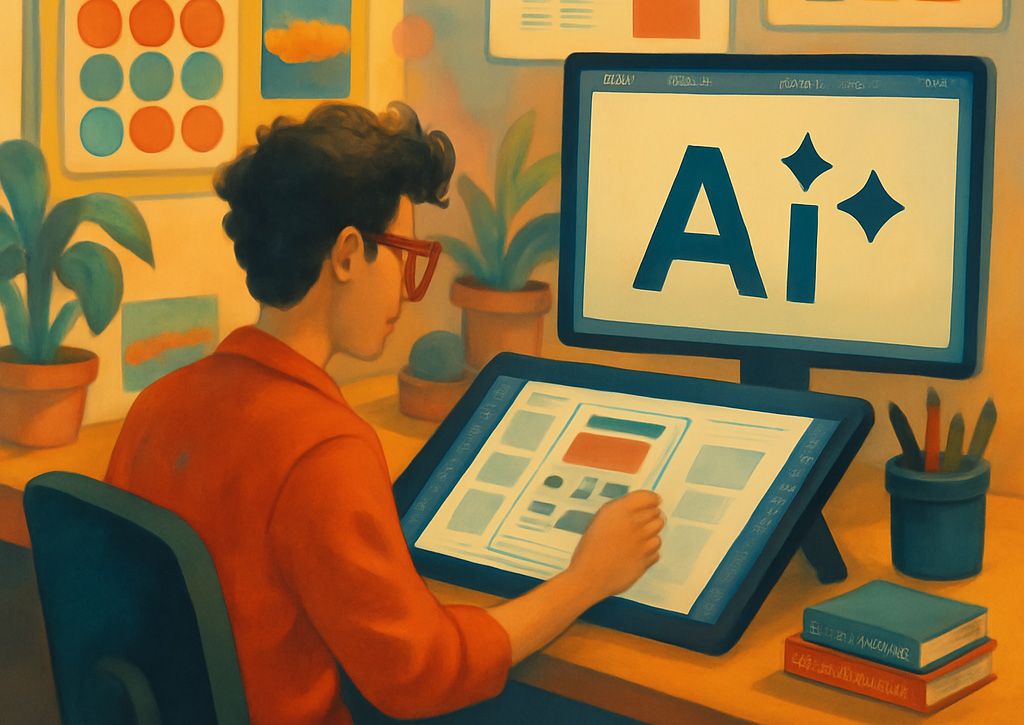What's Really Happening
Think of AI as a really smart assistant, not a replacement. Just like calculators didn’t replace mathematicians, AI won’t replace designers. Instead, it’s changing what we spend our time on.
Before AI: Designers spent hours creating mockups, tweaking colors, and building prototypes.
With AI: Designers can generate these quickly and spend more time on the big picture, understanding users, solving real problems, and making strategic decisions.
Your New Role as a Designer
Your New Role as a Designer
1. The Problem Detective
While AI can create beautiful interfaces, it can’t figure out what problems need solving. That’s where you come in. You’ll spend more time:
- Talking to users to understand their real needs
- Working with business teams to define goals
- Researching market trends and user behavior
2. The Human Advocate
AI doesn’t understand emotions, cultural differences, or accessibility needs the way humans do. You become the voice that asks:
- “Will this work for someone with a disability?”
- “How will this make users feel?”
- “Is this fair and inclusive?”
3. The Experience Architect
Instead of designing single screens, you’ll design entire systems. Think of yourself as the architect of user experiences across:
- Websites and mobile apps
- Voice assistants and chatbots
- Future technologies we haven’t even imagined yet
What You'll Actually Do Day-to-Day
More Strategy: You’ll spend time in meetings, workshops, and research sessions figuring out what to build and why.
Less Production: AI will handle the repetitive tasks like resizing images, generating variations, and creating basic layouts.
More Collaboration: You’ll work closely with AI systems, giving them direction and refining their output to match your vision.
More Testing: With AI helping create variations quickly, you can test more ideas with real users and learn faster.
The Skills That Matter Most
Technical Skills
- Learn to work with AI tools (but don’t worry—they’re getting easier to use)
- Understand data and analytics
- Get comfortable with design systems and components
Human Skills
- Ask great questions
- Listen to users and stakeholders
- Communicate ideas clearly
- Think creatively about problems
Strategic Skills
- Understand business goals
- See how design fits into the bigger picture
- Make decisions based on evidence, not just opinions
Why This Is Actually Good News
Remember when digital tools replaced hand-drawing? Designers worried then too. But digital tools didn’t kill design, they made it more powerful and accessible.
AI is doing the same thing. It’s removing the tedious parts of design work so you can focus on what humans do best:
AI is doing the same thing. It’s removing the tedious parts of design work so you can focus on what humans do best:
- Understanding complex human needs
- Making ethical decisions
- Creating meaningful connections
- Solving problems creatively
How to Prepare for This Future
Start Now: Begin experimenting with AI design tools. Learn what they’re good at and where they fall short.
Stay Curious: Keep learning about your users. The more you understand people, the more valuable you become.
Build Relationships: Work closely with developers, product managers, and researchers. Design is becoming more collaborative.
Think Bigger: Don’t just design interfaces. Think about entire user journeys and business outcomes.
The Bottom Line
AI won’t replace designers, but designers who use AI will replace designers who don’t. The future belongs to designers who can combine human insight with AI capabilities.
Your job isn’t going away, it’s evolving into something more strategic, more impactful, and frankly, more interesting. Instead of spending hours perfecting pixel placement, you’ll spend time understanding users, solving complex problems, and shaping the future of digital experiences.
The question isn’t whether you’ll have a job. It’s whether you’re ready to step up to a bigger, more important role.







